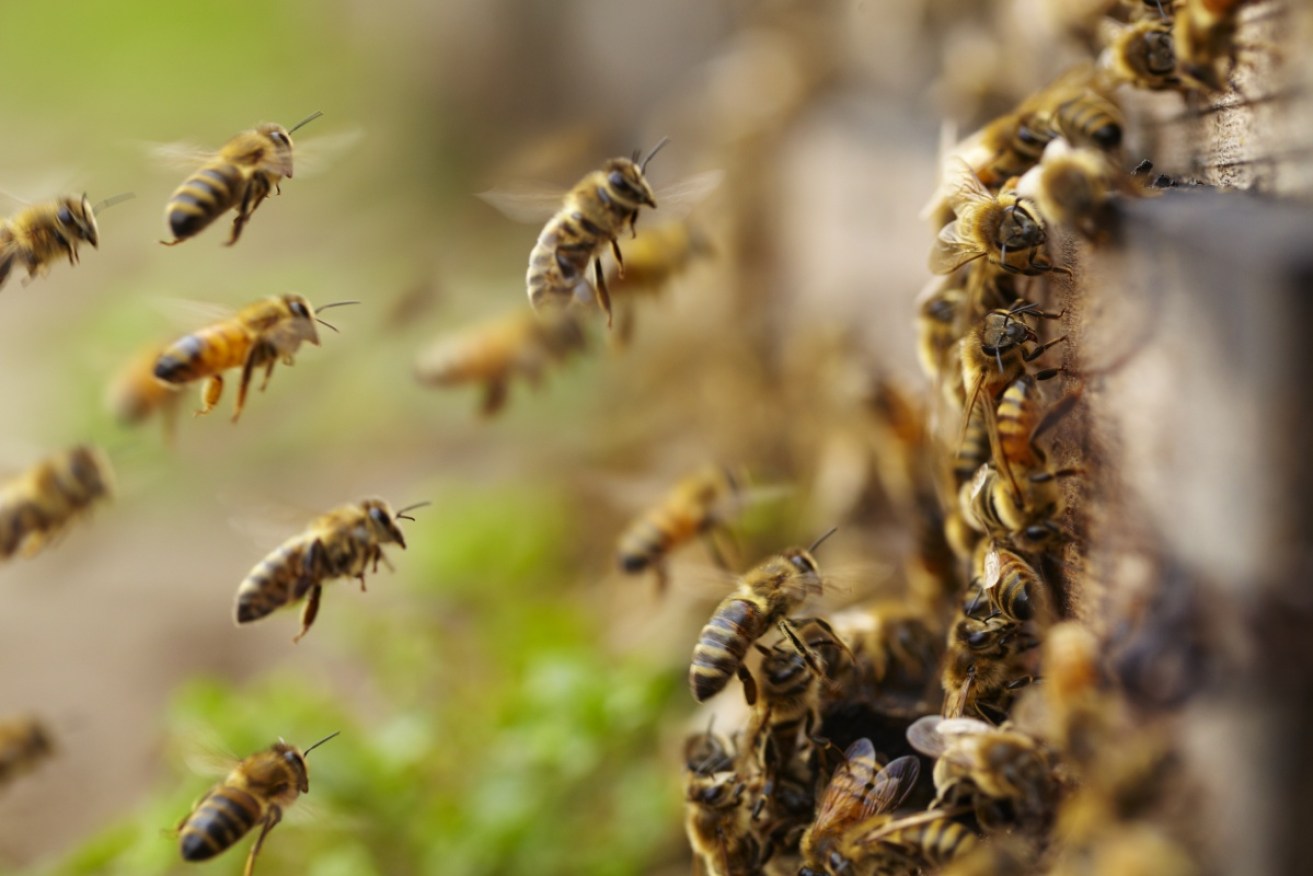The best way to treat a bee sting and a wasp sting

Honey bees, deadlier than the box jelly fish. Photo: Getty Photo: Getty
A bee sting or a wasp sting injects venom into the skin of a person.
According to the British Medical Journal, “bee and wasp venoms are different, each containing distinct major allergens, which are well defined”.
Phospholipase A2 and melittin occur only in bee venom and antigen 5 only occurs in wasp venom. Both venoms contain hyaluronidases.
Wasps possess stingers without barbs that are withdrawn upon stinging. This allows them to sting people multiple times.
In comparison, the honey bee has a barbed stinger that remains in a person’s skin. It is the most common cause of allergic reactions from insects in Australia.
Up to 0.8 per cent of bee sting victims experience anaphylaxis that can lead to death.
What are the symptoms of an allergic reaction to a sting?
A mild reaction may cause:
- Itching
- Redness
- Pain
- Mild to moderate swelling
- Warmth to the area
A severe reaction may cause:
- Sharp drop in blood pressure resulting in dizziness
- Hives
- Swelling to the face, throat, mouth or tongue
- Trouble breathing
- Wheezing
- Rapid pulse

An allergic reaction to a bee sting or wasp sting may result in a rash. Photo: Getty
What’s the best way to treat a bee or wasp sting?
It is important to remove the stinger by scraping the area with the edge of a credit card.
A quick removal will reduce the amount of venom injected into the skin.
Don’t use tweezers as this can inject more venom into the skin.
Next, control the swelling by washing the area with antiseptic soap. Place ice on the sting and elevate the area.
Bee stings take around two to five days to heal so it is important to keep the area clean to prevent infection.
What are home remedies that can be used to treat a sting?
Baking soda
Baking soda helps neutralise the venom providing quick pain relief from itching and swelling.
Mix one teaspoon of baking soda with water to make a paste. Apply the paste on the welt for five minutes and wash with warm water.
Honey
Honey is an antibacterial that reduces the risk of infection and dilutes the venom.
Smear pure, raw honey on the area . Allow it dry and rinse off with warm water. You can repeat this twice.
Apple cider
Apple cider vinegar can also neutralise the pain.
Soak a cotton ball in raw, unfiltered apple cider vinegar and hold it onto the area for 10 minutes.








